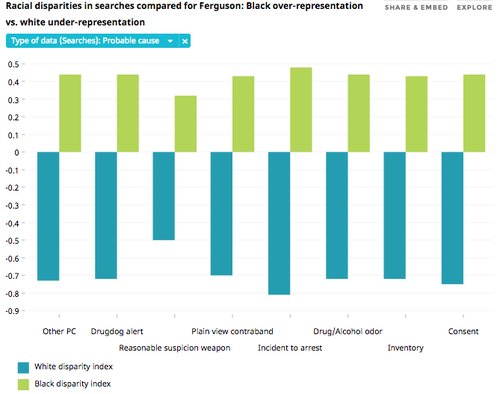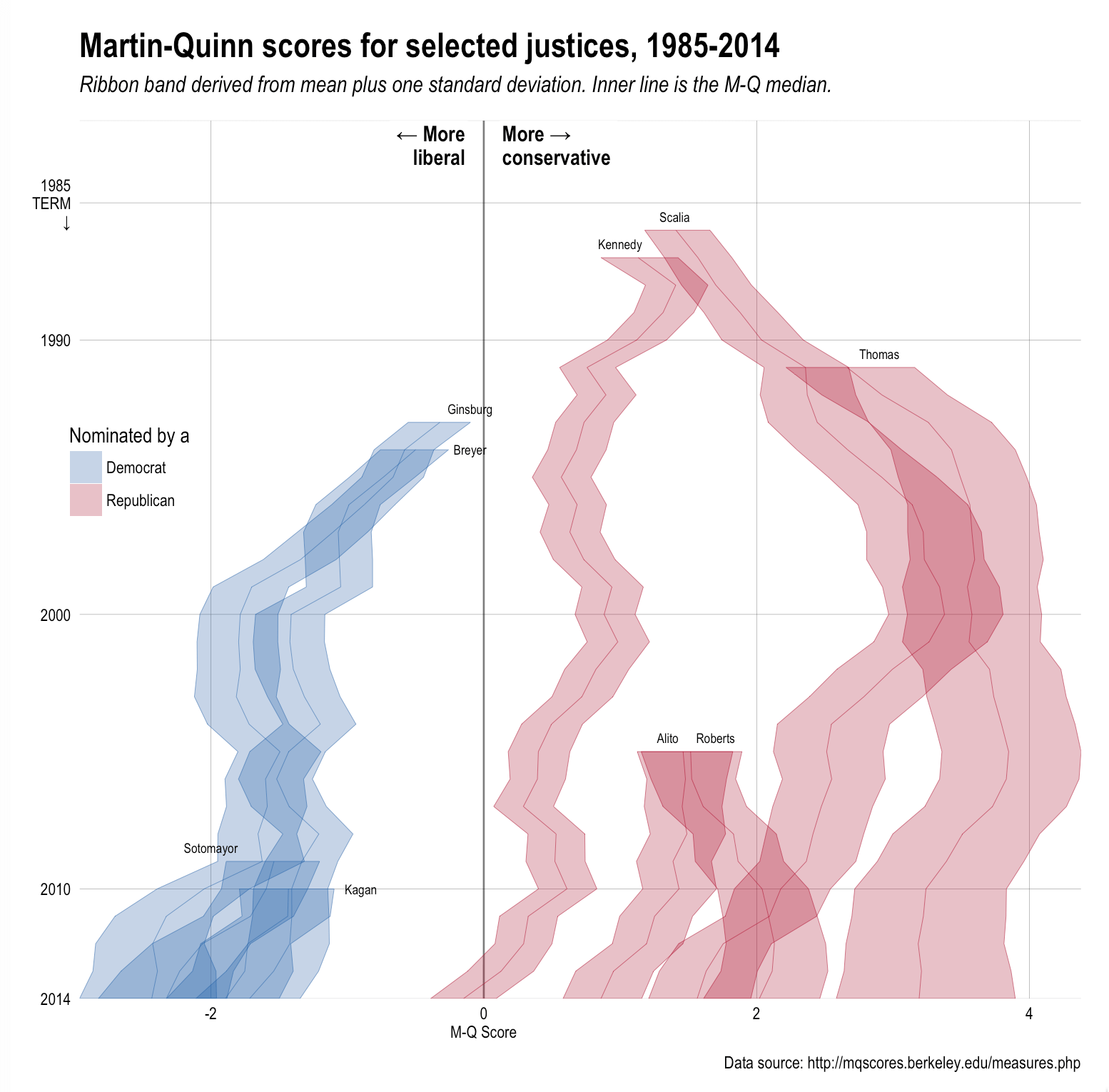The TV upfronts that I wrote about last week may seem like an odd entry point to discuss Brexit and its relationship to technology, but the core insight in that piece is critical. From my follow-up in The Daily Update:
While it is fine and useful to look at industries like TV or transportation or consumer packaged goods or retail in isolation, if you step back far enough all of these industries are interconnected and symbiotic. TV and our modern transportation system and big consumer packaged goods conglomerates and brick-and-mortar retail all came of age in the post World War II era, and all were built with the same assumptions like the importance of scale, controlling distribution, and crucially, that each other existed. There were positive feedback loops driving the growth of all of them together (and many other industries as well).
The implication of this symbiosis is that just as these different industries rose together, they will assuredly fall together as well, and indeed that is slowly but surely happening for all the reasons I detailed last week. For now, though, leave these particulars to the side; I’ll return to them later.
The key takeaway, and my starting point, is the realization that no single issue or company or industry or country stands alone: everything operates in systems, and both influences and is influenced by the system within which it operates. By extension, any change to one part of the system must impact and change other parts of the system: the greater the change, the greater the upheaval until the system can return to equilibrium. Sometimes, though, the change destroys the system completely.
The Old System
During the 20th century, particularly the post World War II era, the United States led the formation of a multinational system that balanced the government, large corporations, and labor.

The U.S. focused its foreign policy on the interrelated goals of containing communism, preventing inter-European wars, and creating markets for the massive industries that had sprung up during World War II and now needed to accommodate millions of returning soldiers. In Europe the headlining effort was the Marshall Plan that combined aid used primarily to buy American-produced goods with an insistence on reducing trade barriers; the General Agreement on Tariffs and Trade came a year later. The Marshall Plan was administered by the Organisation for European Economic Co-operation, one of the first pan-European bodies that started the continent on the long road to the European Union (a road that was paved with U.S. government money1). This dual mission of peace through bureaucracy paid for with trade has endured.
For their part, increasingly massive corporations built out the U.S.’s military power, manufactured most of the industrial and agricultural equipment on which Marshall Plan money was spent, and produced all of the accoutrements of a booming middle class: said middle class worked at those massive corporations, building everything from tanks to cars to washing machines, and spending their money on the same.
The implicit deal was this: the government created markets for the corporations, who in turn provided not just employment but also security for their employees, funding health insurance and pensions, while employees (and corporations) paid for the government: in 1960 the lowest income bracket paid 20%, while the highest paid 90%, and the corporate tax rate was 52%. Europe followed a similar model, but spared of the burden of a huge military, nationalized most social security programs, especially health care but also pensions. And, for two decades, the systems were in equilibria.
How Globalization Upended the System
Globalization is by no means a recent phenomena: the idea of trading goods with other groups, so as to realize the benefits of comparative advantage2 dates back to the earliest recorded human civilizations in the third millennium B.C.E. More pertinent to this discussion, the combination of the industrial revolution (which supercharged the idea of specialization) and steamships massively increased trade in the 19th century, where the freedom of movement of goods was primarily guaranteed by colonialism: colonies supplied the raw materials and bought the finished goods, giving colonial powers massive trade surpluses that could be used to fight intermittent wars with each other.
This system was utterly destroyed by two World Wars, resulting in the U.S.-dominated system above; still, though, the flow of goods was similar: the U.S., the world’s new superpower, was a net exporter, even as Europe and Japan in particular built up their own industrial base first with U.S. funds, and then by selling goods both to the U.S. and to each other. The deal was intact.
Then, in the years leading up to the 1970s, three technological advances completely transformed the meaning of globalization:
- In 1963 Boeing produced the 707-320B, the first jet airliner capable of non-stop service from the continental United States to Asia; in 1970 the 747 made this routine
- In 1964 the first transpacific telephone cable between the United States and Japan was completed; over the next several years it would be extended throughout Asia
- In 1968 ISO 668 standardized shipping containers, dramatically increasing the efficiency with which goods could be shipped over the ocean in particular
These three factors in combination, for the first time, enabled a new kind of trade. Instead of manufacturing products in the United States (or Europe or Japan or anywhere else) and trading them to other countries, multinational corporations could invert themselves: design products in their home markets, then communicate those designs to factories in other countries, and ship finished products back to their domestic market. And, thanks to the dramatically lower wages in Asia (supercharged by China’s opening in 1978), it was immensely profitable to do just that.
It is difficult to overstate the positive impact of this particular period of globalization. Billions of people were lifted out of abject poverty, especially in China but also throughout Asia, and the United States and other western countries became significantly richer as well; trade is absolutely a win-win. Critically, though, while everyone benefited from cheaper goods, the profits were not shared equally: the managers of multinational corporations and their owners reaped the vast majority of the benefits, even as their employee base effectively shifted from their domestic markets to Asia.
This undid the post-World War II deal: middle class jobs began to disappear, and along with them the economic and social security that had been provided by corporations. It took time, to be sure, but the ascension of China to the WTO in 2001 dramatically accelerated this shift, and while its full effects were hidden by a massive expansion in credit fueled by a housing bubble, once that came crashing down in 2008 the former middle classes of developed countries came to realize just how deep was the hole they fell into.
The Inevitable Fallout
Remember, everything is a system. And, given the changes wrought by the post 1970s wave of globalization, it is foolish to think that a core component of society — labor — can be fundamentally changed without there being knock-on effects on the other components of that system. The first murmurs were the 2009 rise of the Tea Party on the right, and the 2011 Occupy Wall Street movement on the left. While the participants of the two groups couldn’t be more different — indeed, they loathe each other — both were outraged at “the System”.
Both movements have flowered this election cycle, both in the United States and the United Kingdom: an old-school leftist was elected the leader of the U.K.’s Labour Party, and another nearly nominated by the Democratic Party. On the right the Republican Party has nominated Donald Trump, aided in no small part by the dramatic weakening of media institutions, while the U.K., in a campaign led by Conservative Party insurgents and the far-right U.K. Independence party, has just voted to leave the European Union with the support of many traditional Labour voters. In both cases there is a new cleavage: less right versus left, and more elites who have benefited from globalization and a middle class that has been left behind.
Again, there are clear differences between the left and right: the former sees Wall Street or The City as the villain, while the latter blames immigration. Both, though, in their own way, want a return to the old deal: honest work for an honest wage, and an increasing sense of having nothing-to-lose until it happens.3
Tech and A New System
A return to the old deal won’t happen, of course, nor should we want it to: the last thirty years have made both the world generally and developed countries in particular richer than ever. What is needed, though, is a new system, and here the tech industry has a critical role to play.
While the first twenty years of the modern tech industry (starting with the personal computer) primarily benefited corporations, the last fifteen years have dramatically improved the quality of life for consumers. The defining quality of technology, particular Internet-based companies, has been the generation of massive amounts of consumer surplus. How much is it worth to have access to all of the world’s information in the palm of your hand, or to be connected with friends and family wherever they are, or to make new connections with people you have never met? Far, far more than however much one pays for a smartphone and a data plan.
That this largesse is financially viable for tech companies is a testament to their tremendous scale. While the old order was about multinationals, Google and Facebook and the rest are supranational: their addressable market is the world.4 Moreover, consumers’ benefit is incumbents’ pain: as I detailed above the new world order is slowly but surely drowning the old one. The question is just how transformative will that new world order be?
If the old system was defined by the government, big corporations, and labor, the new system should be about government, technology, and individuals. It looks something like this:

Government
The first implication of the supranational nature of technology is that unlike the old multinationals, there is no need for government support to open markets and guarantee trade; for the most part, the less government involvement the greater maximization there will be of the consumer surplus that is already being generated. Rather, it is the government that ought take a much more active role in supporting individuals.
At the most basic level this should include security: while universal health care would be ideal, for lots of reasons both practical and political it may not be viable in the U.S. Given that, Obamacare is a huge step in the right direction; other developed countries like the U.K. are obviously well ahead here.
Second, instead of trying to recreate a 1950s fantasy of employment for life on an assembly line, the goal should be to create a far more dynamic labor market with a defined floor and significantly greater upside than the old system:
- First, a universal basic income, facilitated by the government, should be set at the lower bounds of what is necessary to escape poverty. Globalization may have been the first shoe to fall on the middle class, but automation is the other, and it will affect just as many jobs as manufacturing, including — especially — white collar ones
- Second, the government should be loosening regulations on the “gig” economy: technology has dramatically increased the degree to which work can be segmented, and that’s a good thing. Moreover, these sorts of jobs provide the upside to a universal basic income’s floor: our goal should be to make it vastly easier for individuals to better themselves if they choose to do so (while the basic income provide protection against the gig economy’s inherent uncertainty)
- Third, there should be a significant loosening of the regulations and taxation around business creation. One of the many benefits of technology and the Internet has been to make all kinds of new businesses far more viable than ever before, but it is far too hard to get started, and the bookkeeping requirements are far too onerous. This sort of loosening, combined with the reduction in risk resulting from a better safety net and basic income, plus the possibility of building working capital through gigs, could lead to an explosion in creativity and entrepreneurial activity
Each of these factors is critical: a universal basic income alone offers some degree of financial security, but it does not offer dignity to the recipient, or any return for society beyond a reduction in guilt. What is most important, and what offers the highest return, is enabling more and better ways to work and ultimately create: that requires fewer regulations and simpler taxation.
Individuals
I purposely changed the name of this part of the system from “labor” to “individuals”. While collective action was absolutely appropriate in a world where employment was dominated by massive corporations, collectiveness and the work it was appropriate for has its costs: a ceiling on the individual, both in terms of income and also creativity.
What makes today’s world so different than the 1950s are the means with which ambition and creativity can be realized. I can write a newsletter without owning a printing press; someone else can create jewelry without a physical storefront; another can make music without a recording studio, and distribute it without a record label. Those are the easy examples — who knows what sorts of products and services might result from an emboldened and secure middle class?
Young people in particular should relish this new world of opportunities: yes, the world of your parents is gone, but it does not automatically follow that the alternative is worse. Even with today’s mess there are far more entrepreneurial opportunities than ever before, and the younger one is the more one can accept the unnecessary risks that unfortunately still exist. And, on the flipside, opportunities predicated on the old system are themselves riskier than they have ever been.
Tech
It’s understandable why so many in tech are dismissive of the old order: beyond the consumer surplus being generated, and the systematic destruction of incumbents, the industry is increasingly the primary economic driver of the United States in particular, which offers a certain sense of invincibility. It would be against the self-interest of both consumers and politicians to hold tech back.
And yet, there is an aspect of that calculation not far removed from measuring computers based on speeds and feeds. Yes, any rational calculation about the impact of the tech industry shows how indispensable it is, but people are not always rational, especially when they are desperate. It is absolutely in the industry’s best interests to not only participate in but lead the creation of a new system that works to the benefit of all.
To that end, technology executives and venture capitalists should lead the campaign for the type of reforms I have listed above. More importantly, they should match their rhetoric with actions: companies like Apple and Google should strive to be technology leaders, not tax avoidance ones. Successful entrepreneurs and their investors should champion increased capital gains taxes with a bias towards much longer-term investment: this both encourages the long view even as it accounts for the massive return that comes to investors and shareholders in a winner-take-all world. VCs in particular should be willing to close the carried interest loophole, and everyone in the industry should be willing to shoulder higher tax rates.
The payoff is equilibrium: the chance to build fabulously successful businesses that go with the current, not against it. The alternative is far worse: once automation arrives, guess who is going to be the scapegoat?
Brexit: Wrong Reasons, Right Results?
To be clear, this is a package deal: higher tax rates to fuel a misguided attempt to recreate the 1950s would be just as much of a disaster as undoing the old deal has been for the middle class. The world has changed.
Indeed, this is why I’m not quite prepared to join in the panic over Brexit, although I understand and acknowledge the very real downsides. I keep coming back to the fact that the European Union is a product of the old order — a world where government entities existed to enable trade for multinationals and rules for everyone else. Small wonder the EU has been the most hostile to the changes wrought by tech! There is no question that undoing 40+ years of integration will be extremely painful — if indeed the U.K. leaves the EU at all — but given that the old order has already been disrupted, how much is to be gained by continuing to pretend that nothing has changed? Alternatively, might there be potential in building something new?
To be sure, there is no evidence that Brexit was driven by a vision of a new world order; quite the opposite in fact. And, unlike many Brexit voters, I am mindful of the elite consensus about the problems with a withdrawal: trade still matters, and the loss of access to the European market, plus the internal side effects with regards to Scotland and Northern Ireland, are huge problems (and I can read a stock ticker!). But then again, the very definition of who is elite, and why, is as much a part of the system as anything else, and the fact there are so few voices even acknowledging the increased restrictiveness of the EU, or its complete lack of economic growth, much less grappling with why it is the EU came to be and how deeply entwined that is with the old system,5 is to my mind a missed opportunity to at least think about how things could be different.
Everything is connected, everything is a system — and a crisis is a terrible thing to waste.
- The CIA financed nearly all the various organizations and individuals pushing for political integration
- Comparative advantage is the idea that collective productivity can be maximized if every person/group/country specializes in what they are best at, and then trade for what else they need, as opposed to every person/group/country being entirely self-sufficient. This is one of the most important factors underlying economic progress; to take a very fundamental example, few of us grow our own food, as it is more efficient for farmers to do that at scale. We, in turn, sell our specialization to others giving us the means to buy food.
- Is there a racial component to the opposition to immigration? Almost certainly. But I suspect the ugly manifestations of whatever darkness lies in people’s hearts would be much less common in a thriving economy
- Except China, thanks to the Great Firewall
- Above and beyond a desire to keep the peace, which is deeply meaningful




































